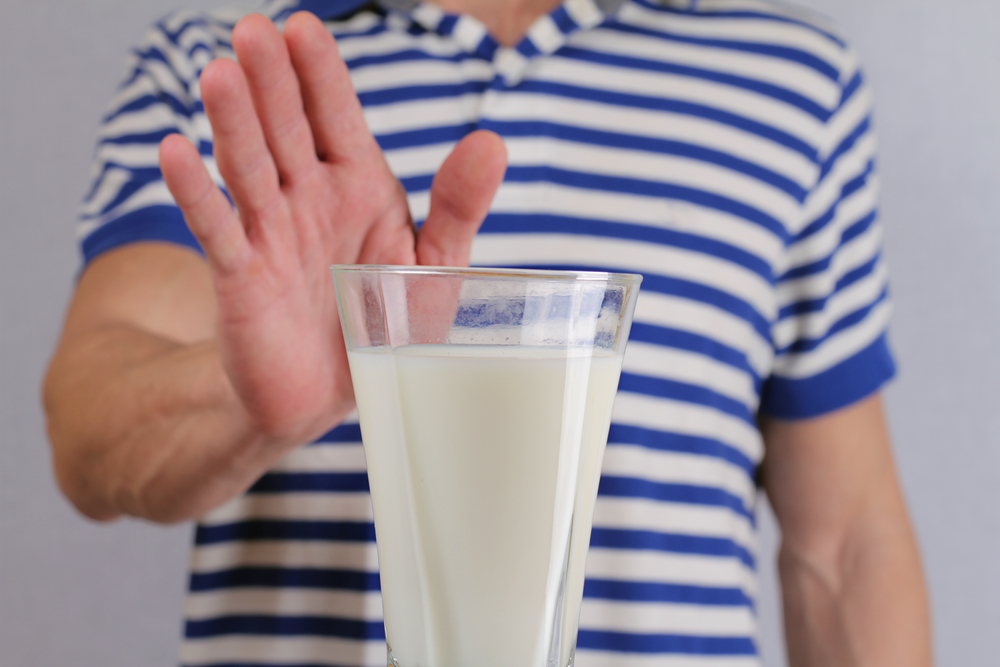Lactose is milk sugar. Lactose is main source of nutrition for the baby until the weaning.Most of the people are born with ability to digest lactose. Digested lactose is been broken down into absorbable forms: glucose and galactose, by the lipase enzyme in small intestine. Lactose intolerance is a condition in which people have digestive symptoms—such as bloating, diarrhea, and gas—after eating or drinking milk or milk products. Some of the people may have lactase deficiency since birth and other may have decreased lactase enzyme over time.
Lactose intolerance is very common, thought to affect around 75% of the world’s population.
Also Read: How to Choose Best type of Milk?
Causes of Lactose Intolerance
Lactose intolerance is due to deficiency of lactase enzyme.Reasons of Lactase deficiency can be divided into primary, secondary or development and congenital causes.
- Primary lactase deficiency
It is the most common type of lactase deficiency where lactase production declines with time. This decrease in the activity of the enzyme is genetically program.The activity of lactase becomes reduced after breastfeeding, at that point the body no longer needs as much lactase.The decline initiates about age 2; however, the decline may begin later too.Lactase deficient children may not experience symptoms of lactose intolerance until late adolescence or adulthood. - Secondary lactase deficiency
Secondary reason is due to the pathologies ( Infection, diseases, or other problems) which may affect the small intestine to secrete lactase enzyme. - Congenital lactase deficiency
lactase enzyme is absent since the birth of the baby. It is a rare disease inherited due to the genetic mutation in the chromosomes forming lactase.
Symptoms of Lactose Intolerance
Lactose intolerance is a condition in which people have digestive symptoms—such as bloating, diarrhea, and gas—after eating or drinking milk or milk products.
Due to lactase deficiency, lactose is not broken down in small intestine causing water and electrolytes to be pulled into the intestines, which results in diarrhea, bloating and flatulence.
Some gut bacteria contains lactase enzyme and they break down ingested lactose into glucose and galactose, use for their own benefit, hydrogen sulphide is produced is produced in this process.
How to Manage Lactose Intolerance?
Lactose intolerance is generally not dangerous. Severity of symptoms, after a lactose intolerant person ingest milk and milk products, depends upon the how much is the quantitative deficiency of lactose enzyme
Individuals with severe deficiency of Lactase enzyme can have a very severe reaction after having even a very minute quantity of Lactose in any form.
There is no “cure” for genetically-programmed lactase deficiency with lactose intolerance.
8 Tips to Manage Lactose Intolerance
-
- Limit Dairy products Limit dairy product till the time discomfort subsides. However, people with Lactose Intolerance may be able to eat some dairy. Yogurt, cottage cheese, and cheese are lower in lactose than milk.
Try dividing your daily lactose intake small (4-8 Oz) servings and spacing them out during the day. On average, lactose-intolerant people can handle 1 cup of milk.
Experts now recommend that Lactose intolerant people can consume some cheese, yogurt, and even milk, lactose intolerance can tolerate up to 18 grams of lactose, spread throughout the day
- Start slowly again
Milk and milk products are rich source of Calcium, one cannot afford complete abstinence of dairy products.If you had an episode of problem after having dairy product, eliminate dairy products from your diet for 2-4 weeks and then try adding small amounts of milk or milk products.
- Keep on trying dairy, tolerance develops
According to American Academy of Pediatrics- child with mild lactose intolerance, try to keep some dairy products in their diet, particularly hard cheese and yogurt, drinking small amounts of milk, which can slowly change their intestinal bacteria and make lactose easier to tolerate and digest. - Make it part of a meal
You may experience fewer symptoms if you take milk or milk products with your meals. Solid food slows down emptying of the stomach and allows extra time for lactase to break down lactose. - Choose lactose free or lactose-reduced milk and milk products
Go for plant-based milks, such as rice, nut, oat, and almond or soya milk fortified with calcium instead — all of them are lactose free. Even regular milk are available in markets with the lactase enzyme added to them. - Check before you buy
Check the ingredients of all food and drink products carefully, because milk or lactose are often hidden ingredients, such as breads, baked goods, processed cereals, instant potatoes, soups, creamy sauces, salad dressings, pancake and biscuit mixes, and powdered meal replacements. - Increase Calcium and Vitamin D rich food in your diet
If you are not using milk or milk products, you may not be getting enough calcium from your diet. Calcium is needed for bone strength as well as muscle function. Choose non-dairy calcium sources. Calcium-fortified orange juice and cereals, tofu, white beans ,eggs, sardines, salmon and non-dairy milk products are all good choices. Add calcium and Vitamin D in your diet according to your body’s calcium needs. Several veggies that are good sources of calcium including beans, dark coloured vegetable: spinach and collard greens, broccoli, soya beans, Chinese cabbage, kale, turnip greens and okra. - Lactase substitutes
In addition to dietary changes, you may also find it useful to take liquid drops, tablets or capsules that contain lactase substitutes. Lactase substitutes can either be added to milk or taken just before eating a meal containing lactose.
- Limit Dairy products Limit dairy product till the time discomfort subsides. However, people with Lactose Intolerance may be able to eat some dairy. Yogurt, cottage cheese, and cheese are lower in lactose than milk.




